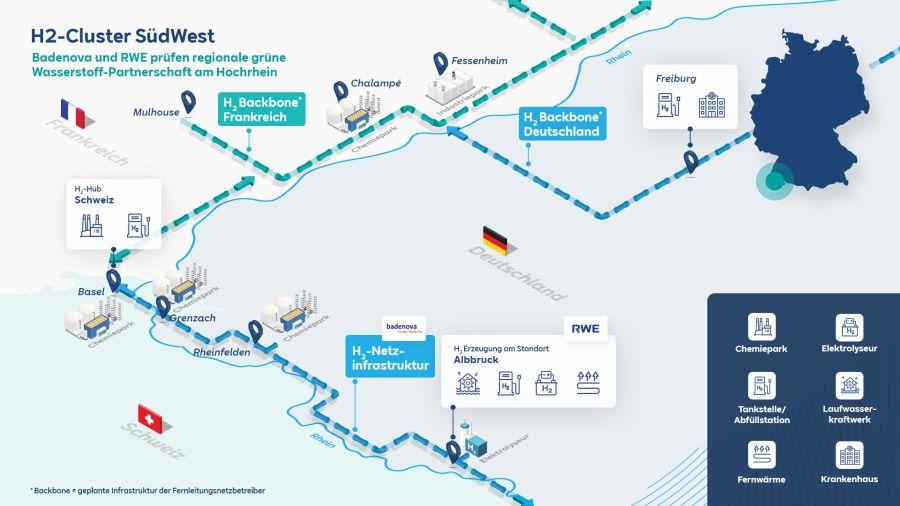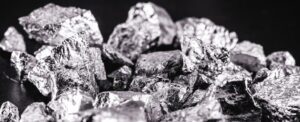RWE is planning to build an electrolysis plant with a capacity of 50 MW in Albbruck, next to RADAG’s run-of-river power plant. The plant will use green electricity from the region to produce up to 8,000 tonnes of green hydrogen annually. The oxygen produced during electrolysis in Albbruck and the process heat are to be used in the district’s planned health park, in the new quarter on the site of the former Albbruck paper mill (PFA) and in the neighbouring sewage treatment plant.
In parallel, the badenova infrastructure subsidiary badenovaNETZE is planning the construction of a new hydrogen pipeline from Waldshut to Albbruck to reach industrial and transport customers on both sides of the Upper Rhine. This is a crucial initiative to keep the local business location attractive for industry, as the connection to the European hydrogen long-distance network, the so-called European Hydrogen Backbone, is not planned until the final expansion stage around 2040. The new route is to form the backbone of the future hydrogen supply along the High Rhine, and at the same time enable the connection of Baden-Württemberg to the European and national hydrogen infrastructure. The feasibility study initiated for this is about to be completed, so that construction can then be implemented.
Starting from the approximately 8.5 km long pipeline section from Waldshut to Albbruck, an expansion of the infrastructure on the High Rhine in a westerly and easterly direction is possible and is currently being examined in order to extend the hydrogen pipeline to the border triangle of Germany, Switzerland and France. In addition, the connection to existing infrastructure is possible. For cross-border networking and connection to a parallel Swiss hydrogen network, badenova and RWE are in dialogue with the energy utility IWB (Industrielle Werke Basel), which together with Fritz Meyer AG are planning to take over distribution on the Swiss side. The plan is to connect to the Swiss grid via a possible Rhine crossing.
Sopna Sury, COO Hydrogen RWE Generation, said: “With the planned electrolysis plant at the RADAG run-of-river power plant in Albbruck, we will be able to provide green hydrogen here in significant quantities from the end of 2026. The green electricity for this will come from renewable sources in the region. With this project, RWE is helping industrial and transport customers on the Upper Rhine to convert their processes to green hydrogen and thus achieve their climate targets. By cooperating with the project partners, we are contributing to the development of a hydrogen infrastructure that will connect the region to emerging hydrogen networks in Germany and Switzerland.”






